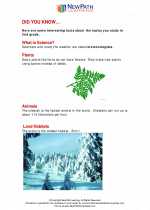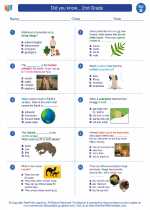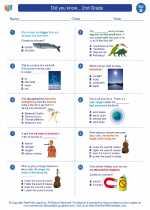Lichens: A Unique Symbiotic Organism
Lichens are composite organisms consisting of a fungus (the mycobiont) and a photosynthetic partner (the photobiont), usually either a green alga or cyanobacterium. This symbiotic relationship allows lichens to thrive in diverse environments, from arctic tundra to tropical rainforests.
Key Features of Lichens:
- Dual Nature: Lichens are not a single organism, but a combination of two or more working together.
- Environmental Indicators: Lichens are sensitive to air pollution, making them valuable indicators of environmental quality.
- Growth Forms: Lichens can exhibit various growth forms, including crustose, foliose, and fruticose, based on their structure and attachment to the substrate.
- Reproduction: Lichens can reproduce sexually through the formation of fungal spores and asexually through fragmentation or soredia.
Study Guide:
To understand lichens better, consider the following questions:
- What are the components of a lichen and how do they interact?
- How do lichens benefit from their symbiotic relationship?
- What are the different growth forms of lichens, and how do they adapt to different environments?
- Why are lichens important as environmental indicators, and how are they used in monitoring air quality?
- What are the methods of reproduction in lichens, and how do they contribute to their survival and dispersal?
By exploring these questions, you can gain a comprehensive understanding of the fascinating world of lichens and their ecological significance.
.◂Science Worksheets and Study Guides Second Grade. Did you know... 2nd Grade
Study Guide Did you know... 2nd Grade
Did you know... 2nd Grade  Worksheet/Answer key
Worksheet/Answer key Did you know... 2nd Grade
Did you know... 2nd Grade  Worksheet/Answer key
Worksheet/Answer key Did you know... 2nd Grade
Did you know... 2nd Grade  Worksheet/Answer key
Worksheet/Answer key Did you know... 2nd Grade
Did you know... 2nd Grade  Vocabulary/Answer key
Vocabulary/Answer key Did you know... 2nd Grade
Did you know... 2nd Grade 

 Worksheet/Answer key
Worksheet/Answer key
 Worksheet/Answer key
Worksheet/Answer key
 Worksheet/Answer key
Worksheet/Answer key
 Vocabulary/Answer key
Vocabulary/Answer key

The resources above cover the following skills:
Earth Systems Science
Weather and the changing seasons impact the environment and organisms such as humans, plants, and other animals. Students can:
Analyze ways in which severe weather contributes to catastrophic events such as floods and forest fires